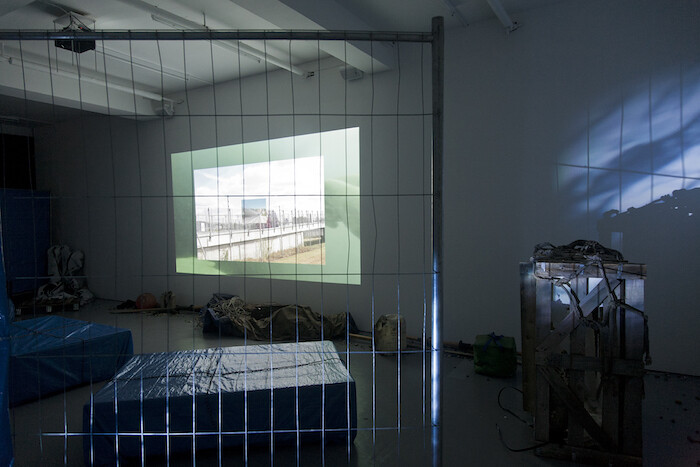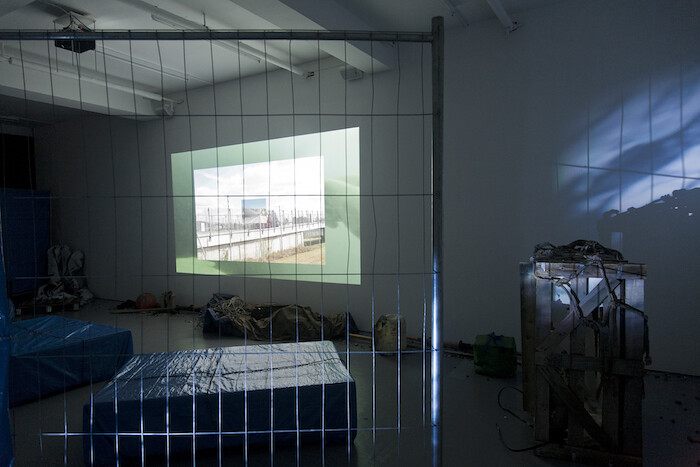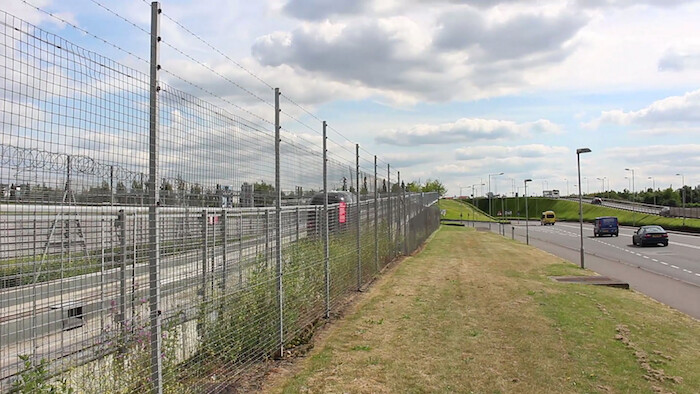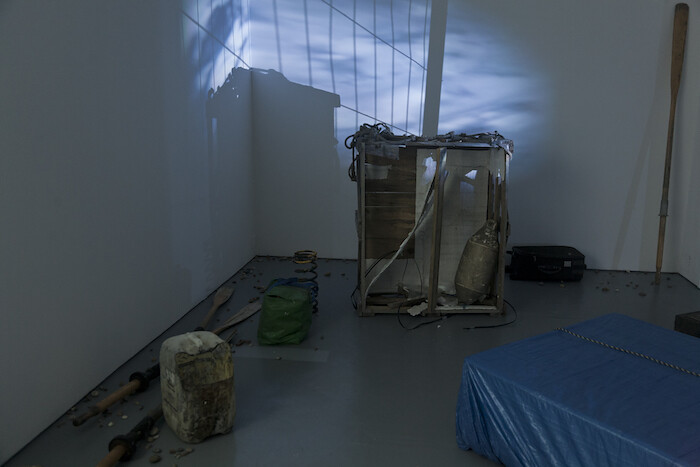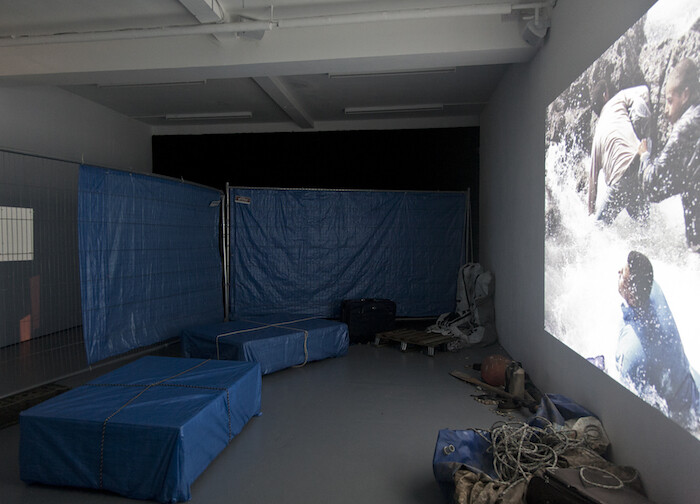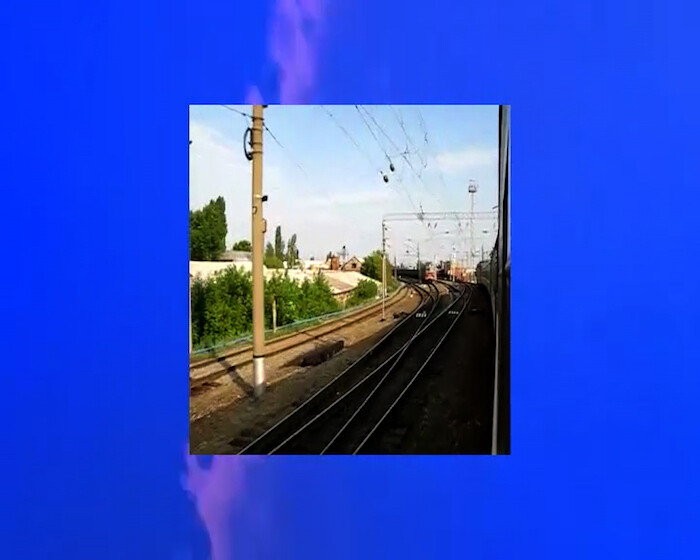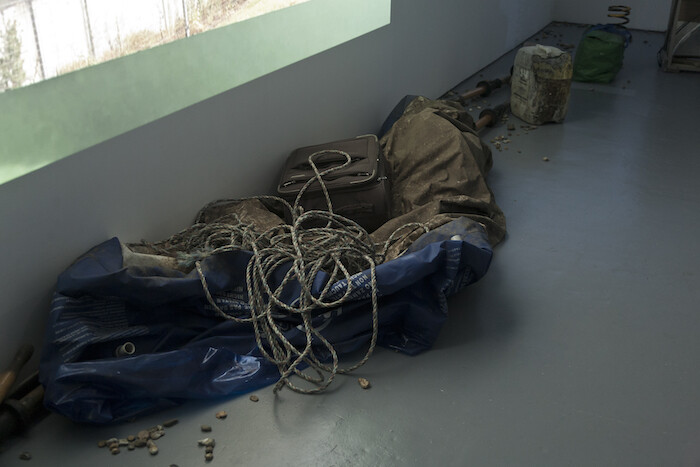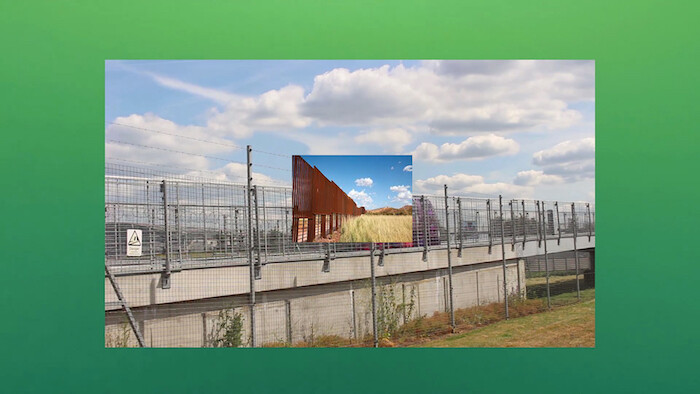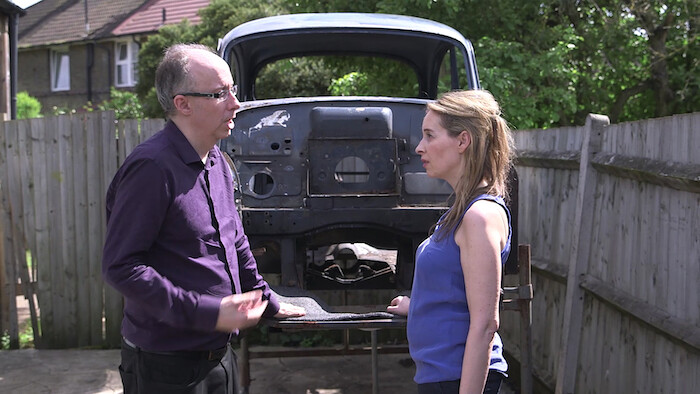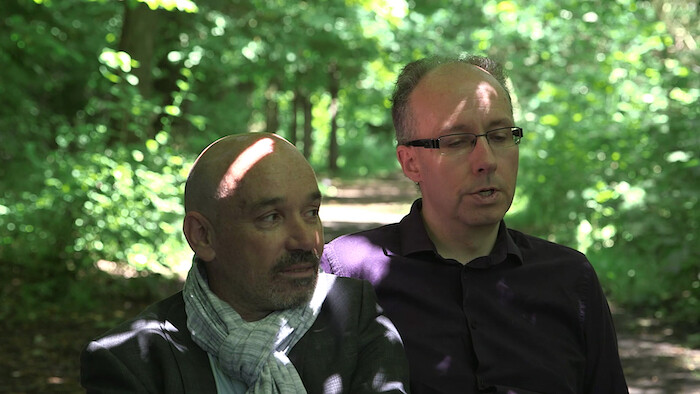You could imagine it happening in a George Barber video. Nothing for a while, then three come along at once—you can almost hear the folksy, mordant voiceover that features in so many of them. Like the cars filmed from above driving an abstract expressionist tableau into being in Automotive Action Painting (2006), three Barber solo shows sketching the arc of the veteran video artist’s production opened across two continents in the autumn of 2015. Two retrospectives and a new commission are on view in Cardiff and Los Angeles, while Hoxton’s waterside contemporary—a long-term production partner for the artist—hosts two of Barber’s recent pieces, Fences Make Senses (2014) and Basement Pool (2015).
Barber’s maverick trajectory as a moving-image artist took him, until fairly recently, on a detour around the gallery exhibition circuit. This is not untypical of a generation of video artists, particularly in Britain, whose participation in the art world was rendered optional by the equally prominent critical and productive complexes of festivals, video distributors, and television platforms. He saw his mission as “structuralism plus fun,”1 insisting on engaging the audience rather than torturing them with duration—evidence of the love/hate relationship with the structuralist film milieu that molded him. Barber’s exuberant, rhythmically edited use of appropriated television footage in his 1980s “Scratch Video” phase saw him barred from mainstream exhibition by copyright anxieties at the outset of his career. This was a hindrance Barber found his way around, plugging the work directly into remix subcultures by distributing it himself to record stores and TV channels.
The resurgence of interest in his career now has a great deal to do with post-net and post-media energies in the art academy finding eye-popping precedents in the real-time sound and image torsions of works like Absence of Satan (1985), painting Barber as the man who invented YouTube. Though Scratch Video’s aesthetics were generalized so totally it’s hard to imagine Photoshop without the tools it invented, also influential are the later works like Walking Off Court (2007), which combine dry English whimsy and cosmic speculation in the script with the camera’s cubist figuration of generic British suburbia. Though Barber’s stylistic preoccupations seem to be magnetizing a new generation, he has also moved into more overtly politicized issues. He has achieved this without losing the deceptively humdrum “everyman” POV which renders his address at once acutely discomfiting and revealing in a way inaccessible to the more established artistic strategies of ambiguity or shock in the treatment of topical injustices.
Fences Make Senses was produced prior to the recent escalation of the refugee crisis in Europe. Its display, however, does coincide with this turmoil. Thus the film’s vision of the plight of refugees who cross the Mediterranean in frail vessels, only to face bureaucratic contempt on arrival, can’t help but strike an eerie and grindingly false note with its use of an amateur theater troupe of middle-class white Britons to enact refugee humiliation and officious state apathy. The pain of watching these scenes means the homegrown Brechtianism is working, as the vignettes skate between training video and burlesque (the refugees speak a made-up argot) to amount to a punishing commentary on the empathy deficit of Western states and publics. Or, as the voiceover intones several times “to imagine is at least a beginning.” The scene where the crew of a ship which has ignored a migrant boat in distress ponder what to say in their incident report—a sighting of a dot on the horizon, maybe dolphins—is a metonym for the West’s disavowal of responsibility for the parts of the world Western geopolitics have cast into chaos. The soundtrack talks about the very different conditions of transit for desired commodities—like biscuits—against undesirable ones—like human migrants—and about the utility of fences in defending intolerable contradictions. These are underscored by the superimposition of footage of holidaymakers ambling through airports over static images of a man waiting against a border fence.
The gallery scenography extends the milieu of the film, with tarp-covered pallets, inflatable boats, battered suitcases, fuel cans, and ropes organizing the darkened space of projection. In one of the corners is projected a sequence of water playing. A second smaller room resembles a modest home gym with the video screen fitted into the console of a cross-trainer belonging to the artist. It performs as a scale model of the monstrosity envisaged by the querulous protagonist of Basement Pool, whose neighbors are excavating their basement to install the eponymous object—a prosaic occurrence in the landscape of built financial assets which is London today. His surplus Verfremdung is expressed as anxiety about the contagion of consumerism filtering into his own mind through the thin walls separating their properties. The two videos combine into a melancholy survey of the “immunity complex”2 of the Western body politic, a helpless self-regard which is not only “lacking at the level of sense” (an immortal line from Barber’s video I Was Once Involved in a Shit Show, 2003) but which is actively hostile to that public’s own survival. By locating this nihilism in the chirpy tones of everyday inertia and the popular perception that this is a crisis too large for anyone to grasp, Barber commits to a high-stakes play in which the trivial and the tragic, the crude and the tender, are too entangled to defend their own borders.
3 The idea of the “immunity complex” is developed in Roberto Esposito’s Immunitas: the Protection and Negation of Life, trans. Zakiya Hanafi (Polity Press, 2011).
George Barber interview with Maggie Warwick (March 6, 2007). http://waterside-contemporary.com/artists/george-barber/text/rewind-intervew-2007.pdf
The idea of the “immunity complex” is developed in Roberto Esposito’s Immunitas: the Protection and Negation of Life, trans. Zakiya Hanafi (Polity Press, 2011).
The idea of the “immunity complex” is developed in Roberto Esposito’s Immunitas: the Protection and Negation of Life, trans. Zakiya Hanafi (Polity Press, 2011).
